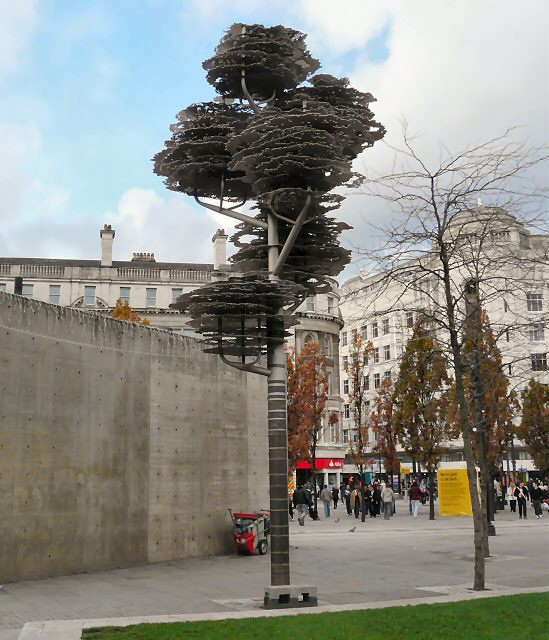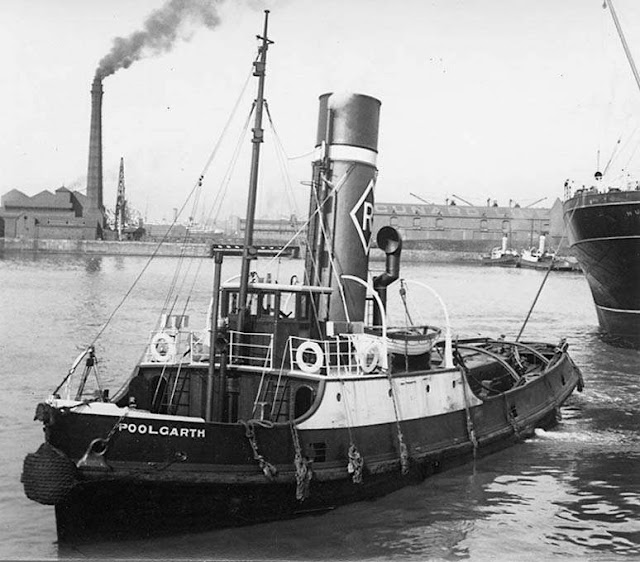Sunday 22 December 1940
 |
| Deansgate in the center of Manchester, 22 December 1940. |
The real prize is Valona, to the north, but there is little chance of the Greeks advancing that far during the winter. This is the final big Greek achievement of the winter counteroffensive. Many read more into the Himara success than it warrants, concluding that the Italians are now beaten. However, the Italians are not beaten, they simply haven't been fighting - a subtle but vital distinction.
Elsewhere, the Greek II Corps is fighting in the vicinity of Klisura between the Aöos and the Apsos rivers, but so far has been unable to break through the strategically vital Klisura Pass.
The Royal Navy bombards Valona in southern Albania, a key Italian supply port, while the RAF bombs oil facilities at Kuçovë.
 |
| Piccadilly in Manchester ablaze as a result of the Luftwaffe attacks of 22 December 1940. |
Tonight is the heaviest raid on Manchester during the Blitz. About 270 German bombers attack as night falls at 18:38, followed later in the night by a second wave. Liverpool, with its blazing fires, provides an easy guide for the bombers, who drop 272 tons of high explosives and 1032 incendiary bombs. Hardest hit are the Piccadilly area, the city center, and the docks area. Also hit are Safford and Stretford. Overall during this campaign, there will be 684 deaths and 2364 injured. There is a near-tragedy when a bomb hits a Gibson shelter at Hulme Town Hall, inside which 450 people are trapped. However, unlike some other situations where broken mains and the like flood the shelter and drown many people, these people get out alive.
The Luftwaffe also hits Liverpool again for the third night in a row with a subsidiary effort. In fact, the night is notable for a large number of secondary attacks throughout England. The Corpo Aereo Italiano (CAI) bombs Harwich again, this time with four bombers.
The RAF scores a night fighter success when a No. 141 Squadron Defiant shoots down a Heinkel He 111 of KG 55, which lands at Underwood House in Etchingham, Sussex.
RAF Coastal Command, meanwhile, attacks the ports of Wilhelmshaven, Brest, and Lorient. RAF Bomber Command attacks Mannheim and Ludwigshafen in the Rhineland, the inland docks at Cologne, oil facilities at Frankfurt, and various invasion ports.
 |
| The "Tree of Remembrance" in Piccadilly Gardens. This is a memorial to the civilians who perished during the Manchester Blitz, commissioned in 2005 by the Manchester City Council. |
A bomb just misses destroyer HMS Foresight, which is in drydock. Holes are punched in its side and minor damage from bomb splinters roughs up the superstructure. However, it remains nicely positioned for further repairs.
British 179-ton tug Poolgarth hits a mine and sinks off Canada Dock in Liverpool. Everyone on board perishes.
British 7402-ton tanker Elax hits a mine off Liverpool and is damaged.
The Luftwaffe damages 5400-ton British freighter Pardo, 14,935-ton freighter Almeda Star, and 671-ton hopper barge No. 9 at Liverpool.
At Caernarvon Bay, Wales, Greek 3298 ton freighter Anthippi N. Michalos collides with a much bigger ship, the 9957-ton freighter Beaverdale, and sinks. The Beaverton also is damaged, but not enough to impair its operations.
Royal Navy submarine HMS H.31 sinks at Campbelltown, Argyllshire apparently due to some kind of hatch issue near the engine room. It is quickly refloated, however, and repaired at Elderslie.
British 4966-ton freighter Llandilo hits a mine and sinks in the Thames Estuary near the Yantlet Buoys.
Royal Navy corvette HMS Columbine collides with sloop HMS Aberdeen. Columbine must be towed to Stornoway, while Aberdeen is only lightly damaged and continues on with its convoy duties.
German cruiser Admiral Scheer remains on the loose in the South Atlantic despite a fleet-sized Royal Navy effort to find it. Today, it rendezvouses with supply ship Nordmark and captured "delicatessen" Duquesa (which contains extensive supplies of fresh meat and eggs).
Convoy FN 365 departs from Southend, Convoy FS 368 departs from Methil, Convoy HX 98 departs from Halifax, Convoys SL 60 and SLS 60 (the slow group) depart from Freetown.
U-557 launched.
 |
| The Poolgarth, lost to a mine with all hands today. |
Royal Hellenic Navy submarine Papanikolis spots an Italian convoy off Brindisi. It attacks 364-ton Italian freighter San Giorgio with its deck gun, and rams 70-ton wooden Italian sailing ship Antonietta, sinking it. The Papanicolis is not damaged.
Royal Navy aircraft carrier HMS Illustrious continues its depredations on the Italian positions in Libya, launching 15 Swordfish to bomb Tripoli. Convoy MG 1, traveling to Gibraltar before dawn via the Strait of Sicily, is attacked by Italian submarine Serpente. The Serpente damages destroyer HMS Hyperion, which is taken in tow, but ultimately is scuttled due to the danger of towing the ship so close to Italian territory.
British battleship HMS Warspite, carrying Commander in Chief Mediterranean Admiral Cunningham, departs Malta's Grand Harbour in the morning after a 40-hour stopover. The Warspite is headed back to Alexandria.
 |
| HMS Hyperion, lost today off Libya. |
US/Vichy French Relations: At Norfolk, Virginia, new Ambassador to France Admiral Leahy boards heavy cruiser USS Tuscaloosa - recently back from carrying President Roosevelt and Harry Hopkins on a tour of the Caribbean - for his new position in France.
 |
| German Officer Heinz Butoew, taken 22 December 1940. |
Eden's elevation is more a case of getting rid of Halifax than it is putting the proper man in a key role. Halifax, who came extremely close to becoming Prime Minister earlier in the year instead of Churchill, is tarnished by his association with the disastrous Chamberlain appeasement policy. He also has butted heads with Churchill since Churchill's elevation about the delicate issue of peace talks with Germany, reinforcing the impression that he is not "all in" for the war. Halifax is the last of Chamberlain's cronies to leave the Cabinet and will be little-noticed from here on out despite remaining the ambassador to the US throughout the war.
Replacing Eden as Secretary of State for War is David Margesson, who has been Parliamentary Secretary to the Treasury.
Churchill, meanwhile, continues his discussions with the Ministry of Supply today. Among other things, he casually mentions that the government may have to begin requisitioning private property to house refugees from the big cities.
Whereas yesterday he found out how much mustard gas was available, today Churchill gets into the nitty-gritty of industrial production, things such as aluminum production, brass strip, and drop-forging stocks. Drop forging is the process of heating metal and hammering it into dies. Basically, it is the process of shaping metal to fit the contours of a mold. This process is important for producing weapons of war such as ships and tanks and artillery pieces. Churchill learns that the British Isles are only producing 208,000 tons of drop-forgings, with another 7,000 tons imported from the United States. The armaments industry, however, needs to produce 441,000 tons annually. This shortfall must be made up somehow, either via increased imports from abroad (meaning the United States) or by increased British production. Otherwise, this somewhat arcane process may become a bottleneck for the entire British war effort.
Churchill also meets with the Home Secretary, Herbert Morrison, about another ticklish situation: Oswald Mosley. Mosley is a former MP and Great War veteran who has been interned (with wife Diana) at Holloway Prison since 23 May 1940 under Defence Regulation 18B. The charge against them is Fascist sympathies (he is the founder and leader of the British Union of Fascists). Churchill and Morrison decide to do nothing about the Moseleys. However, while reviewing other cases, Churchill recommends that Pandit Nehru in India - who has been imprisoned in one form or another since engaging in nonviolent protests against British rule over the summer - be handled more respectfully.
American Homefront: Labor leader Philip Murray, president of the CIO (Congress of Industrial Organizations) and a Scottish-born steelworker, submits a plan to the government to soak up excess manufacturing capacity in Detroit's auto plants. He proposes to convert shuttered production lines to the manufacture of 500 fighter planes per day. He is a strong supporter of the Roosevelt administration and the war effort, the right man in the right place to ease the industrial transition toward military production.
December 1940
December 1, 1940: Wiking Division Forms
December 2, 1940: Convoy HX 90 Destruction
December 3, 1940: Greeks Advancing
December 4, 1940: Italian Command Shakeup
December 5, 1940: Thor Strikes Hard
December 6, 1940: Hitler's Cousin Gassed
December 7, 1940: Storms At Sea
December 8, 1940: Freighter Idarwald Seized
December 9, 1940: Operation Compass Begins
December 10, 1940: Operation Attila Planned
December 11, 1940: Rhein Wrecked
December 12, 1940: Operation Fritz
December 13, 1940: Operation Marita Planned
December 14, 1940: Plutonium Discovered
December 15, 1940: Napoleon II Returns
December 16, 1940: Operation Abigail Rachel
December 17, 1940: Garden Hoses and War
December 18, 1940: Barbarossa Directive
December 19, 1940: Risto Ryti Takes Over
December 20, 1940: Liverpool Blitz, Captain America
December 21, 1940: Moral Aggression
December 22, 1940: Manchester Blitz
December 23, 1940: Hitler at Cap Gris Nez
December 24, 1940: Hitler at Abbeville
December 25, 1940: Hipper's Great Escape
December 26, 1940: Scheer's Happy Rendezvous
December 27, 1940: Komet Shells Nauru
December 28, 1940: Sorge Spills
December 29, 1940: Arsenal of Democracy
December 30, 1940: London Devastated
December 31 1940: Roosevelt's Decent Proposal
2020

Easy to read and follow
ReplyDelete